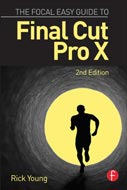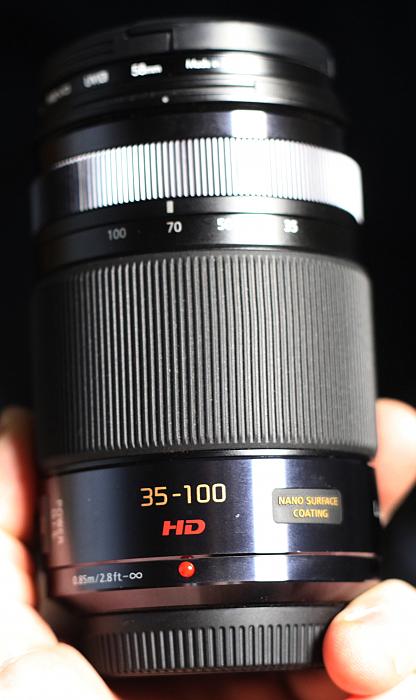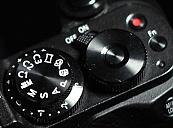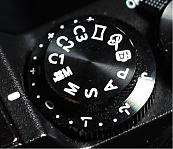Above: Journey to Leeds, filmed with the Panasonic GX8, using Panasonic 12-35mm F2.8, Panasonic 35-100mm F2.8. Filmed completely handheld with image stabilisation on.
The Panasonic GX8 is an intriguing camera. Designed to shoot high quality stills and 4K video, this camera represents a cross-over for photographers wishing to shoot video, or video shooters who want a small, portable high-quality video camera which works with Micro Four Thirds lenses.
The later description applies to me.
The later description applies to me.
Recently I have invested in top of the range Panasonic Micro Four Thirds lenses, and find this to be an extremely useful system for the videographer who travels a lot, needs to keep the weight down, yet needs to shoot high quality content.
I started with some of the affordable Micro Four Thirds lenses, and quickly upgraded to the top of the line Panasonic MFT lenses:
Panasonic 7-14mm F4
Panasonic 12-35mm F2.8
Panasonic 35-100mm F2.8
Panasonic 100-300mm F4-5.6
In full-frame 35mm photography the equivalent focal lengths of the above lenses would be (crop factor is 2x):
14-28mm
24-70mm
70-200mm
200-600mm
I started with some of the affordable Micro Four Thirds lenses, and quickly upgraded to the top of the line Panasonic MFT lenses:
In full-frame 35mm photography the equivalent focal lengths of the above lenses would be (crop factor is 2x):
So why the Panasonic GX8
I spent a lot of time online viewing 4K images from many different cameras. I was taken with the images from the GX8. Check out the 2 videos below as these were instrumental in influencing my decision to buy the Panasonic GX8. Simply put, the tones, colours, overall feel and quality of the images are what sold me!
I spent a lot of time online viewing 4K images from many different cameras. I was taken with the images from the GX8. Check out the 2 videos below as these were instrumental in influencing my decision to buy the Panasonic GX8. Simply put, the tones, colours, overall feel and quality of the images are what sold me!
Shooting video with the GX8
Shooting video is simple. Select Movie Mode and press the red button on top of the camera – you are recording. It really is that simple.
Shooting video is simple. Select Movie Mode and press the red button on top of the camera – you are recording. It really is that simple.
If you wish to lock the exposure, there is a nicely placed small button, located top right on the back of the camera – this is titled AF/AE LOCK. By default, exposure and focus is locked for as long as you hold the button. In the custom settings you can choose to have the Exposure/Focus Lock turn on and off each time you press the button.
Exposure can also be easily adjusted to over or under-expose the image, simply by turning the clearly labelled dial, located beneath the mode wheel, on top of the GX8. This is simple and effective.
These manual controls may sound primitive to those used to high-end video cameras, however, between Exposure/Focus lock and the exposure adjustments dial on top of the camera, I have been able to achieve consistently good results.
These manual controls may sound primitive to those used to high-end video cameras, however, between Exposure/Focus lock and the exposure adjustments dial on top of the camera, I have been able to achieve consistently good results.
Above: Anzac War Graves, Harefield – filmed with the Panasonic GX8, using Panasonic 100-300mm lens and Panasonic 7—14mm wide angle.
In the hands the GX8 is light though substantial. For the movie at the top of this article – Journey to Leeds – I used only 2 lenses: the Panasonic 12-35mm F2.8 and the Panasonic 35-100mm F2.8. For both of the lenses stabilisation’s was left on at all times. I have to say I am astounded at how effective the stabilisation is. I can pretty much film without a tripod and have stable footage. Note all of the footage in Journey to Leeds was filmed handheld.
Notice the movie above, titled Harefield London, Anzac War Graves, this piece was predominantly filmed using the Panasonic 100-300mm F4-5.6. The stabilisation, as one would expect, isn’t nearly as effective at the long end of the lens (effectively 600mm in 35mm terms). My feeling is that anything up 100mm in the Micro Four Thirds format (equivalent to 200mm in full-frame 35mm) can be filmed quite effectively, hand-held, providing you have a steady grip and shoot with OIS switched on.
Notice the movie above, titled Harefield London, Anzac War Graves, this piece was predominantly filmed using the Panasonic 100-300mm F4-5.6. The stabilisation, as one would expect, isn’t nearly as effective at the long end of the lens (effectively 600mm in 35mm terms). My feeling is that anything up 100mm in the Micro Four Thirds format (equivalent to 200mm in full-frame 35mm) can be filmed quite effectively, hand-held, providing you have a steady grip and shoot with OIS switched on.
Many things impress me about filming with the GX8.
Filming with the attached EVF is excellent. Why can’t all cameras have such a nice EVF... The images in the viewfinder are nice and bright, featuring peaking, histogram, audio meters and even an indicator to show if the camera is level. The camera is ready to shoot the instant you power up – no delay what-so-ever. The articulating screen on the back works great as a screen and also doubles as a touch pad. With auto-focus engaged simply touch anywhere on the screen to focus. You can do this with your eye pressed up again the EVF. This is simply a fantastic way to work. You can also set the lenses to manual focus if you choose.
Filming with the attached EVF is excellent. Why can’t all cameras have such a nice EVF... The images in the viewfinder are nice and bright, featuring peaking, histogram, audio meters and even an indicator to show if the camera is level. The camera is ready to shoot the instant you power up – no delay what-so-ever. The articulating screen on the back works great as a screen and also doubles as a touch pad. With auto-focus engaged simply touch anywhere on the screen to focus. You can do this with your eye pressed up again the EVF. This is simply a fantastic way to work. You can also set the lenses to manual focus if you choose.
Above: a few shots grabbed in Barcelona during the day and into the night. Mainly shot with the Panasonic 35-100mm F2.8, with image stabilisation on.
The camera records 4K at 24/25P or HD at 25/50P for Europe; for USA you can record 4K at 24/30P or HD at 30/60P. This is a big disappointment to me that Panasonic have regionalised the models. I have filmed a lot in the US and lights flicker unless you are set to 30 or 60P. This limits how useful this camera is for professional use. I’d love it if Panasonic were to enable worldwide frame rates via a firmware upgrade – even if this were to be a paid upgrade this would keep professionals users like me happy!
I’m not disappointed with the results of the recorded video. For the size of camera, ease of use, and the price, the results are simply astounding. You can shoot seriously high quality video with this camera, be it 4K or HD.
Another feature which I still haven’t tested, though love the sound of, is the fact that the GX8 is weather sealed. The 2 lenses I have been using most, the 12-35mm F2.8 and 35-100mm F2.8 are both weather-sealed. This means, allegedly, that you can take the camera and weather-sealed lens in the rain or in and around a waterfall. This is one I’m sure I will test at some point, however, I’m not there yet. So try out the weather sealing at your own risk!
There is no headphone jack on the camera. This is disappointing. External audio can only be fed to the camera over a 2.5mm mic jack. 2.5mm is not the easiest connection to find and the fact that there is no headphone jack indicates this isn’t a camera designed to do everything. (I’d suggest for high quality audio with this camera that one works with dual system sound.)
I’m not disappointed with the results of the recorded video. For the size of camera, ease of use, and the price, the results are simply astounding. You can shoot seriously high quality video with this camera, be it 4K or HD.
Another feature which I still haven’t tested, though love the sound of, is the fact that the GX8 is weather sealed. The 2 lenses I have been using most, the 12-35mm F2.8 and 35-100mm F2.8 are both weather-sealed. This means, allegedly, that you can take the camera and weather-sealed lens in the rain or in and around a waterfall. This is one I’m sure I will test at some point, however, I’m not there yet. So try out the weather sealing at your own risk!
There is no headphone jack on the camera. This is disappointing. External audio can only be fed to the camera over a 2.5mm mic jack. 2.5mm is not the easiest connection to find and the fact that there is no headphone jack indicates this isn’t a camera designed to do everything. (I’d suggest for high quality audio with this camera that one works with dual system sound.)
Conclusion
Regardless of the fact that the audio capabilities of the camera are limited, and the models are regionalised in terms of frame-rate options, I regard the GX8 as a real performer and a camera suitable for high quality image acquisition in a small, largely unnoticeable package. As mentioned early in this review, for those who want to be able to shoot both high quality 4K or HD video and stills, to be able to move quick and get top quality results using lightweight Micro Four Thirds lenses, then this camera is definitely a good choice. My hope is the sensor featured in the GX8 finds its way into the Panasonic GH5. I like the images that the GX8 produces and would love this quality, look and feel in a more capable body.
Enjoy this camera if you get hands on one – it is a delight to shoot with and the results, for shooting either 4K or HD video, are excellent. There are some good pre-Christmas deals around at the moment and cash back offers from Panasonic, so shop around for the best price! The GX8 is now available at significantly reduced prices to when it was released several months ago, making it a bargain of a combination video/stills camera in today’s market.
Regardless of the fact that the audio capabilities of the camera are limited, and the models are regionalised in terms of frame-rate options, I regard the GX8 as a real performer and a camera suitable for high quality image acquisition in a small, largely unnoticeable package. As mentioned early in this review, for those who want to be able to shoot both high quality 4K or HD video and stills, to be able to move quick and get top quality results using lightweight Micro Four Thirds lenses, then this camera is definitely a good choice. My hope is the sensor featured in the GX8 finds its way into the Panasonic GH5. I like the images that the GX8 produces and would love this quality, look and feel in a more capable body.
Enjoy this camera if you get hands on one – it is a delight to shoot with and the results, for shooting either 4K or HD video, are excellent. There are some good pre-Christmas deals around at the moment and cash back offers from Panasonic, so shop around for the best price! The GX8 is now available at significantly reduced prices to when it was released several months ago, making it a bargain of a combination video/stills camera in today’s market.
Above: Sunset over the Pyrenees, filmed with the Panasonic GX8, using Panasonic 35-100mm F2.8. Filmed completely handheld with image stabilisation on.
For more info. about the GX8 visit the Panasonic website:
http://www.panasonic.com/uk/consumer/cameras-camcorders/lumix-g-compact-system-cameras/dmc-gx8.html
http://www.panasonic.com/uk/consumer/cameras-camcorders/lumix-g-compact-system-cameras/dmc-gx8.html

































